Potty Training 101: How to House Train Your Dog or Puppy
Make your pup a potty pro with these house training tips.
Make your pup a potty pro with these house training tips.
by Katie Koschalk, | March 25, 2024

SolStock / iStock
Whether you’re starting with a clean slate or correcting previous habits, house training (aka potty training) your newly adopted puppy or adult dog tops the list as one of the most important things to teach your new family member. This fundamental skill not only keeps your floors clean, but also fosters communication between you and your canine companion.
So, how exactly do you house train your dog? Guiding your dog to pee outdoors instead of inside requires positive reinforcement and gentle redirection of accidents until the habit cements. Let’s break down how to teach this important behavior.
Although the general blueprint for house training is the same whether you’re working with a puppy or an adult dog, there are a few key differences to keep in mind.
“Puppies usually have much faster metabolisms, so what goes in must go out fairly rapidly,” says certified dog trainer Brett Reynolds, director of dog care and training at The Dog Stop. Puppies also have a smaller bladder capacity and less awareness of their bodies’ needs, he adds. This means puppies will need more bathroom breaks throughout the day. (More on frequency shortly).
Puppies are like sponges, soaking up new information quickly. They’re in the critical learning period and tend to adapt to new routines faster than adult dogs. Conversely, adult dogs may have already established habits, making it slightly more challenging to break old patterns and introduce new ones.
Adult dogs are more likely to have a history that influences their behavior and response to house training. They may have been subjected to inconsistent, inadequate, or harmful training methods in their previous home, leading to confusion or reluctance to follow new instructions.
It’s essential to be patient and understanding, offering reassurance and positive reinforcement to help them overcome past traumas or negative associations.
When house training adult dogs, consider any underlying health issues that may affect their ability to control their bladder or bowel movements. Senior dogs, in particular, may be prone to urinary incontinence or other medical conditions that require special consideration. Your veterinarian can help rule out any health concerns and provide guidance on managing them during the house training process.
Potty training should begin as soon as a puppy or adult dog is brought home, says Reynolds. But, in the case of a puppy, don’t expect a lot of progress until they’re 12 to 16 weeks old. Before this age, puppies don’t have the physical ability to hold their pee and poop for extended periods. However, you can still introduce young puppies to the concept of house training by establishing routines and positive associations with outdoor bathroom areas.
There’s no set time frame for house training a puppy, as several factors can influence the duration of the process, says Reynolds. Age, size, breed, physical health, consistency and style of training, and environmental factors all have an impact.
“If forced to make a general statement, I would say that it takes approximately two to three weeks of consistent observation, management, and reinforcement to house train a puppy,” says Reynolds. Although, others may take longer to fully master the process.
Reynolds also notes that house training “failures” are almost entirely due to shortcomings on the human’s part, such as lack of consistency and using a poor training method.
So, how do you potty train your puppy or adult dog the right way? Here are the basic steps to follow:
Keep your dog under supervision at all times while inside. Close doors to other rooms so they stay in one location. It’s especially important to block off carpeted rooms and rooms with rugs.
If you must take your eyes away from your dog, confine them in a room with a hard-surfaced floor, in a crate (proper crate training is needed), or outside the crate in a secure area.
It's easiest for a dog to learn to go in one specific spot outside, rather than having free rein to choose. Pick a bathroom spot, be it in your yard, on artificial grass on your patio, or on another porous surface, like dirt or gravel.
Note: Even if your dog comes to you already house trained, it’s still important to show them the appropriate place to pee and poop in their new environment. By showing them the designated bathroom spot and using consistent cues, you can help them adjust to their new surroundings and prevent them from going in inappropriate places.
Establish a consistent schedule for your dog that includes sleeping, feeding, play/exercise, and bathroom breaks. Keep in mind that dogs need to be taken to their bathroom spot soon after waking up in the morning, after eating and drinking, after play sessions, and before bed.
Reynolds suggests taking your dog to the bathroom spot every hour for the first few days to help cement the process. Gradually extend the time between bathroom breaks as your dog gets the hang of it.
Note that puppies will need to go out more frequently than adult dogs — about every one to three hours for puppies and about every six hours for healthy adult dogs. But, those are not hard numbers. Consider factors like your dog’s age, health, food and water intake, and activity level when determining bathroom break frequency.
A phrase like “go potty” (or anything else you prefer) can help your dog understand when and where to go the bathroom. Say it two or three times when your dog is in their bathroom spot to encourage them to do their business. Say it in a happy voice — never in a frustrated or mean tone.
Allow your dog to circle and sniff, but don’t encourage them to play — this is serious business time! Be patient and quiet, and wait at least five minutes.
After your dog has finished peeing or pooping, immediately praise them, give them affection, and give them a dog treat.
“It’s critical that you reward them on the spot, and not once they’re back inside,” says Reynolds. This helps them associate going to the bathroom in that spot with good things, which encourages them to repeat that behavior in the same way. If they don’t go, it’s back to indoor supervision until the next set time.
Do not scold or punish your dog for indoor accidents. This applies to when you see an accident in real-time and when you discover one after the fact.
Yelling at or physically disciplining your dog is not only abusive and inhumane, but will likely cause fear (of you and in general), anxiety, and even more accidents in the future. Plus, dogs cannot make a connection between punishment and something they did in the past, so punishment after the fact will not teach them anything.
If you catch your dog in the act of peeing or pooping indoors, firmly say "No," but don't yell. Then, immediately take them to the designated bathroom spot outside and reward them with praise and a treat. This helps your dog associate going to that place with a reward.
When/if your pup has an accident inside your home, thoroughly clean the area using an enzymatic pet cleaner to remove all traces of the smell. If they keep going to the same spot, put a tarp or other pee-proof object on top of that spot — or lock them out of that room until they’re solidly housetrained.
Once your dog consistently goes when you take them outside, gradually increase the time between bathroom breaks. When you’re down to three to four times a day, with no accidents inside, consider your dog successfully house trained.
Now that you’re familiar with the fundamentals of potty training a dog, here are some additional tips to consider:
Try bell training: Hang a bell by the door (whichever one leads to the outdoor bathroom area) and teach your puppy to ring it when they need to go to the bathroom. This provides a clear and consistent way for them to communicate their desire to go outside, says Reynolds. If needed, consult with a local positive reinforcement trainer for assistance with bell training.
Learn your dog’s body language: Become an expert in the unique body language your dog uses in the moments before they pee or poop, says Reynolds. “Sniffing and circling are common cues, but every dog has a signature ritual that reveals itself over time,” he adds.
Stay consistent with feeding times: Avoid free-feeding and offer meals at set times throughout the day. Regular feeding times help establish a predictable bathroom routine and make it easier to anticipate when your puppy will need to go outside.
Increase tolerance to bad weather: Teach your puppy to be okay with going outside in any kind of weather. Start with short play sessions in cold or wet weather and increase the length of time you spend outside as your puppy gets older.
Practice patience and kindness: House training can test your patience, but do your best to keep your cool. Accidents will happen, and handling them in a calm, kind way is essential for maintaining a positive learning environment for your dog.
Your potty-trained dog may suddenly be peeing in the house due to medical issues, stress or anxiety, territorial behavior, changes in routine or environment, or aging. If this occurs, consult with your vet to rule out any underlying medical conditions and address any behavioral factors contributing to the behavior.
To stop dog marking, consider neutering your male dog if they’re not already. Additionally, provide ample opportunities for outdoor bathroom breaks, clean any marked areas thoroughly with an enzymatic pet cleaner, and redirect their behavior with positive reinforcement training.
To help prevent accidents, use baby gates or barriers to restrict access to off-limit areas. Other general aspects of dog-proofing your house include securing cabinets or trash cans with childproof locks, removing or securing toxic substances, and keeping electrical cords, small objects, and choking hazards stored away.
House Training for Puppies and Dogs
How to Potty Train Puppies: A Comprehensive Guide for Success
How to Potty Train Your Puppy or Dog

Katie Koschalk is a freelance writer based in Northern California. Fusing her love and knowledge of animals with her journalism degree and years of professional writing, Katie is dedicated to improving the lives of pets and their caretakers by sharing helpful and accurate information. When she’s not at her desk, you can find her exploring trails with her Aussie, Hunter, cooking plant-based meals, and talking to her two cats, Jax and Sadie, in really ridiculous voices.

Behavior & Training
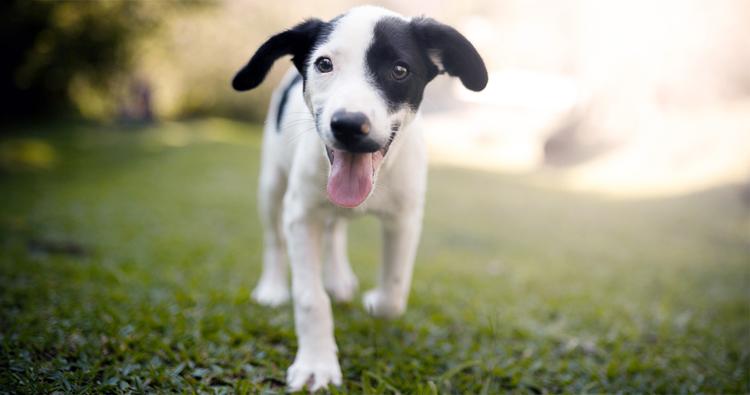
Adoption Advice
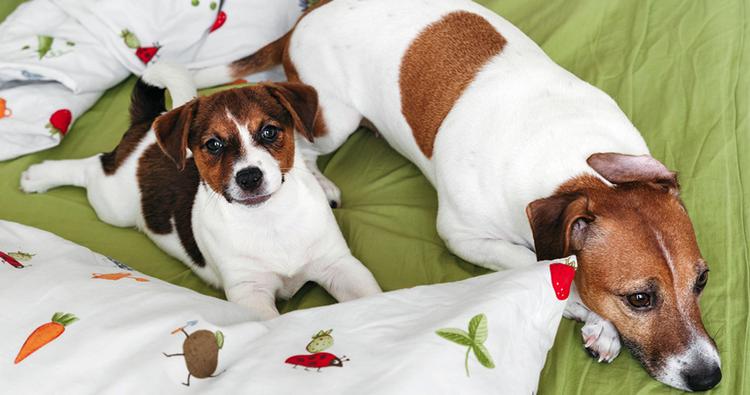
Adoption Advice

Adoption Advice
Adopting a new puppy can shake-up the doggy dynamics at home. Here’s how to keep the peace and harmony among your pets.
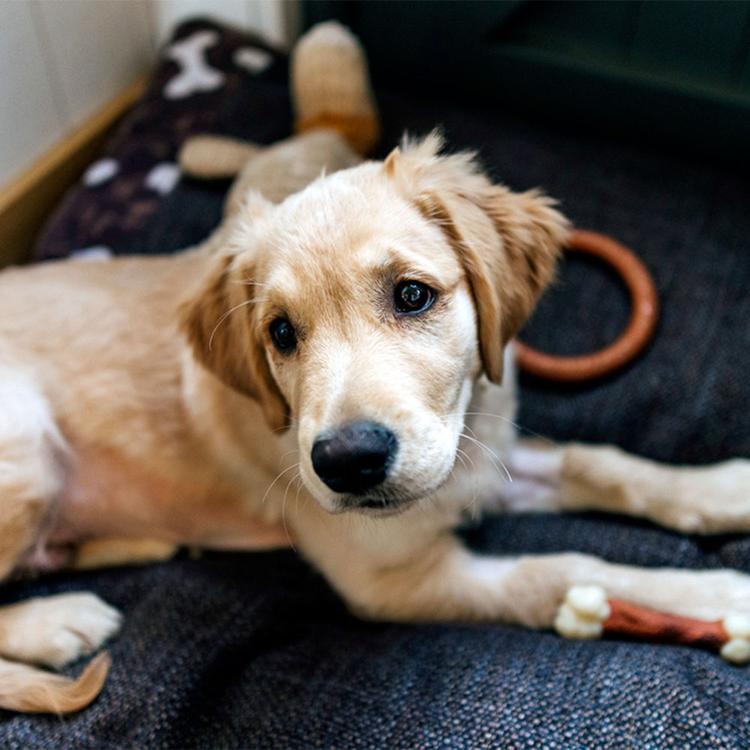
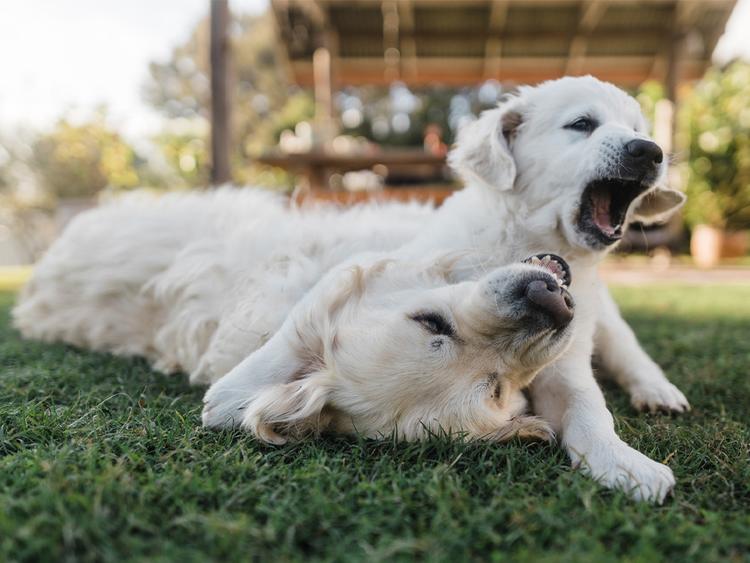
Adoption Advice
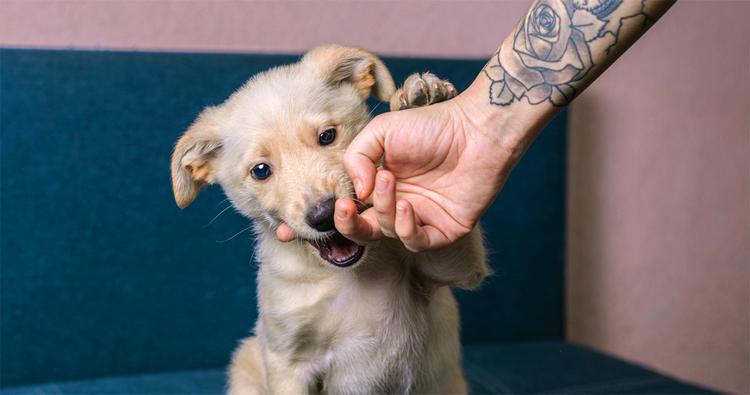
Behavior & Training
Is your new pup biting everything? Learn effective ways to curb this behavior by teaching bite inhibition.

Adoption Advice
Wondering how old your dog is? We can help! Here’s how you can determine your dog’s age.

Adoption Advice
Did you just bring home an adorable puppy?
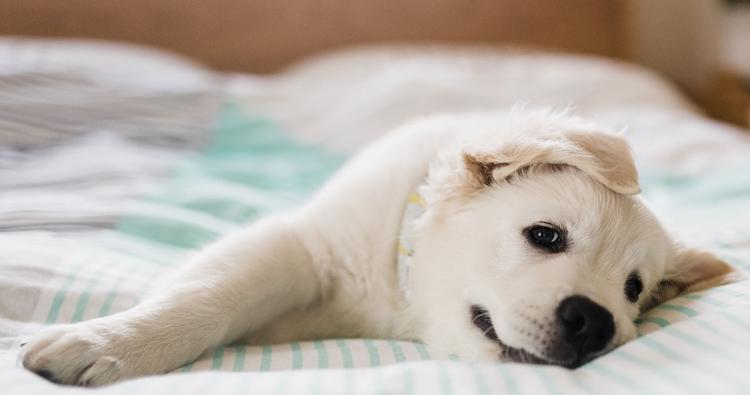
Adoption Advice
Adopting a new puppy? We've created a checklist to help you get organized before bringing your new friend home.

Adoption Advice
Getting ready to adopt a new puppy? Download our guide to help you prepare for the arrival and first few months with your new puppy

Adoption Advice
Hesitant to adopt a dog? We break down common dog adoption worries and offer practical tips for a smooth transition.